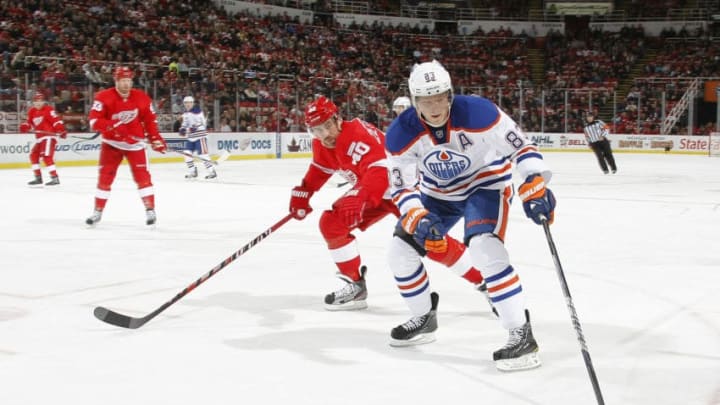So how have teams in the past hurt themselves in free agency’s opening day? July 1, 2014 is a shining example of how.
Going back to 2014, plenty of money exchanged hands on July 1. This opening day of free agency saw some oddball contracts being handed out to the players.
Taking a look at three of the worst contracts, Ales Hemsky (coming from a 43 points in 75 games regular season) starts this list.
Dallas signed the forward in 2014 to a three-year $12 million contract. Jim Nill still had himself a great offseason by acquiring Tyler Seguin from the Boston Bruins and Jason Spezza from the Ottawa Senators. This signing, however, seems like one Nill would like to erase. Hemsky’s average yearly cap hit of $4 million is actually a bargain (if you can call it that) compared to the next two players from this free agency class.
The second worst of the three would be former New York Rangers forward Benoit Pouliot. Pouliot’s five-year $20 million contract carried the same annual value as Hemsky’s, but for another two years tacked on. Many around the league were stunned that the team paid him that much money over that kind of term.
His statistics never justified this type of contract either. He had never surpassed 20 goals in a season, or even 40 points for that matter. Signing a player like Pouliot to a five-year deal is a disaster waiting to happen. Although, as bad as that is, there was one worse contract handed out that year.
The third, and certainly worst contract that we need to mention here is Dave Bolland’s deal with the Florida Panthers. This is far and away the worst and most confusing free agent signing in recent memory.
Coming off of an injury shortened season with the Toronto Maple Leafs due to a severed ankle tendon, the Panthers signed him to a head scratching five-year $27.5 million deal. The former Blackhawk and Stanley Cup champion carried a yearly cap hit of $5.5 million dollars and saw limited time on the ice with his new team.
Playing in 78 games over two seasons, Bolland failed to live up to his ill-advised contract. Only scoring 21 points in those 78 appearances, he was eventually sent to the minors and hasn’t played in the NHL since. Citing injuries, notably that same ankle he injured before the signing, Bolland has had a difficult time making it back on the ice.
Have the New York Rangers avoided this pitfall?
On the forward side of things, the New York Rangers have done a much better job of limiting long-term signing altogether. This has led to various bridge deals for young players and one-year deals for the few veterans that may come to camp.
Any hold overs from the old core are also short-term, and outside of Zibanejad, there isn’t a forward signed for more than the next two seasons. While long-term deals for Kevin Hayes, Mats Zuccarello and Chris Kreider could be in the cards in the near future, these are possible core players and there aren’t any depth forwards on the roster taking up significant cap space.
The defensive side is where the Rangers have longer deals that are more troubling.
Kevin Shattenkirk and his deal have three more seasons, as does much-maligned Marc Staal. However, at $12.4 million a season, those two deals aren’t going to prevent the rebuilding Rangers from being flexible.
Brady Skjei was also just signed to a six-year deal worth $5.25 million a season. It seems like the Rangers are betting on his promise in hopes that he develops into top-four defender.
One contract that could earn its share of criticism is that of Brendan Smith’s.
With three more seasons remaining at $4.35 million a year, this could be the one contract detractors could point to as a “bad contract.” It’s certainly a high figure for an offensively limited defenseman who provided less than stellar defensive play in 17-18.
However, if Smith can turn his career around and become an acceptable defender, that deal won’t look as bad. Regardless, these deals on the defensive end won’t crippling New York financially going forward. The Rangers project to have over $21 million dollars in cap space next offseason.
Bad deals can severely impact teams for seasons, but thankfully, the New York Rangers have limited themselves and stay flexible going into the next few seasons.
